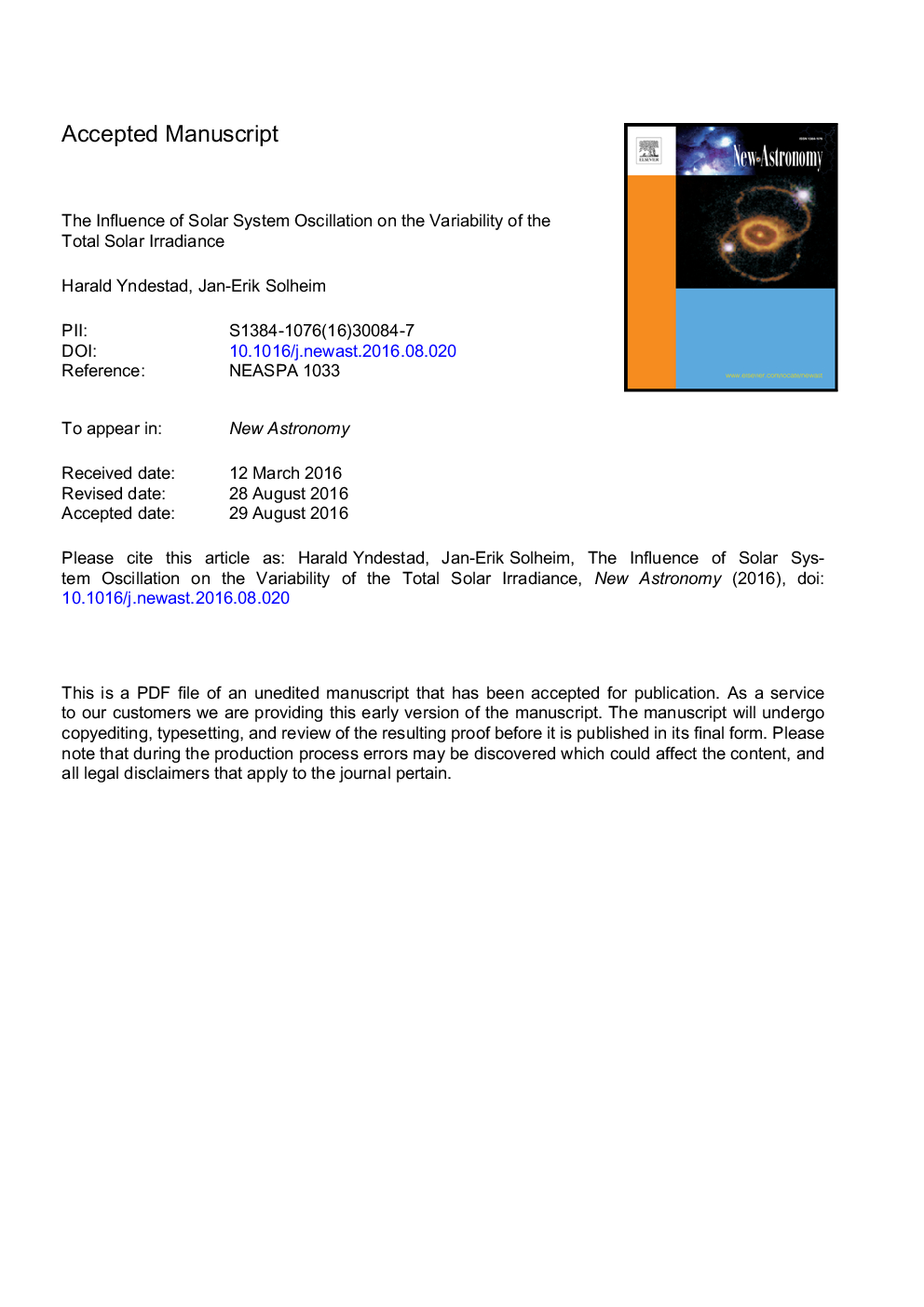| Article ID | Journal | Published Year | Pages | File Type |
|---|---|---|---|---|
| 8141443 | New Astronomy | 2017 | 57 Pages |
Abstract
We find that a stationary component of the solar variability is controlled by the 12-year Jupiter period and the 84-year Uranus period with subharmonics. For TSI and sunspot variations, we find stationary periods related to the 84-year Uranus period. Deterministic models based on the stationary periods confirm the results through a close relation to known long solar minima since 1000 A.D. and suggest a modern maximum period from 1940 to 2015. The model computes a new Dalton-type sunspot minimum from approximately 2025 to 2050 and a new Dalton-type period TSI minimum from approximately 2040 to 2065.
Keywords
Related Topics
Physical Sciences and Engineering
Physics and Astronomy
Astronomy and Astrophysics
Authors
Harald Yndestad, Jan-Erik Solheim,
